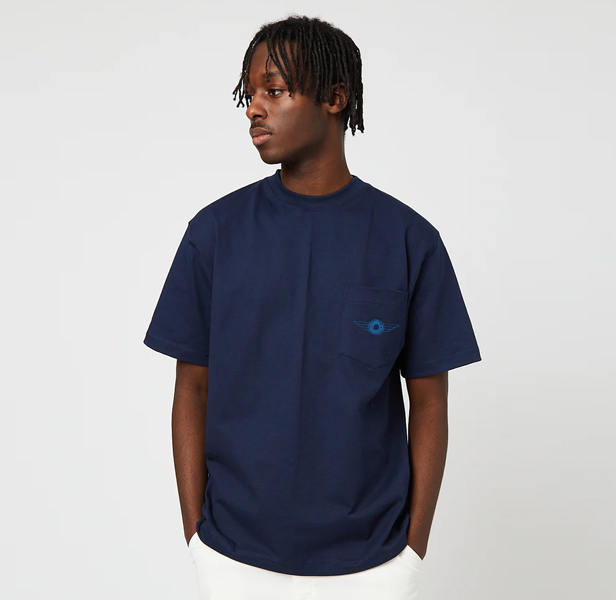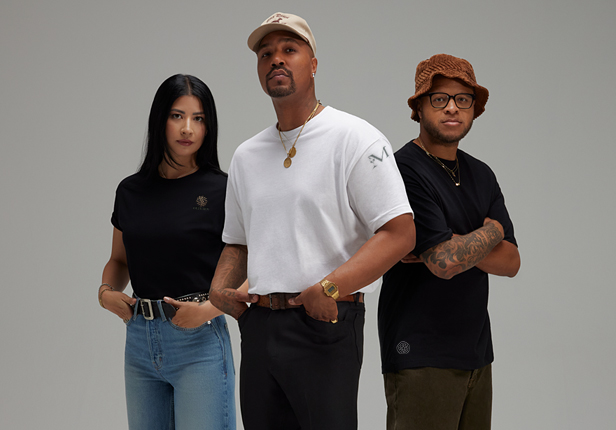Product Hub July 25, 2024
T-Shirt Takeover: Heavyweight Tees Dominate the 2020s
This retro-inspired apparel category burst onto the fashion scene last decade and has come to be the most on-trend look among the style conscious.
Style moves in a cycle, promo T-shirt specialists say.
“It’s just the natural progression of fashion,” says Michelle Yu, creative director of design at Bella+Canvas (asi/39590). “Everything comes full circle.”
Bella+Canvas’ (asi/39590) new heavyweight shirt collection, which includes the 3010 6-oz. Heavyweight Tees shown here, combines comfort and style, director of design Michelle Yu says.
In the early 2000s, soft and lightweight garments were in, replacing beefy tees as the “it” shirts. The trend evolved to silky tri-blends made with cotton, polyester and rayon later in the decade. Fitted fully cotton tees made a comeback in the early 2010s.
But now, the cycle has restarted. Tastes have moved away from fitted and lightweight products and back to a yesteryear look and feel that was big before the turn of the century: heavyweight, oversized cotton T-shirts.
“Because fashion repeats itself, we are very much in the mid-nineties,” says Milissa Gibson, sales director at Lane Seven Apparel (asi/66246).
The roots of the trend’s latest incarnation stretch back to the mid-2010s, when heavyweights burst onto the scene. Well into the current decade, the look remains at peak popularity – the thick, bulky designs enticing buyers with their durability, sustainability and versatility.
Lane Seven Apparel’s (asi/66246) Milissa Gibson said the shift in sales toward heavyweight T-shirts was the fastest she has seen. Pictured here is Lane Seven’s Unisex Urban Heavyweight T-Shirt (LS16005).
Michigan-headquartered All USA Clothing (asi/30171) knows all about it.
The supplier has sold heavyweight clothing primarily to blue-collar workers since 1970, Vice President of Sales Cary Heller says. All USA is a leading sales partner to the brand Camber, carrying the Norristown, PA-based company’s American-made clothes, which have traditionally been for people who dig, weld and solder in the cold. “They need a T-shirt that works as hard as they do,” Heller says.
While such end-users remain essential, Camber’s reach expanded significantly with the emergence of the heavyweight trend.

The Camber 302 8-oz. T-shirt is made with compacted cotton and has proven popular with everyone from blue-collar workers to New York fashionistas.
Fashion houses from New York City and Tokyo started calling in 2015. Suddenly, orders were flying in from Japan, South Korea, Great Britain and elsewhere around the world. Media attention came with the growing international popularity; GQ asserted that Camber sold “The World’s Greatest Sweatshirt” in a 7,000-word profile.
The company had transcended its audience unintentionally – mainstream fashion broke into Camber. And certainly, that behooved All USA Clothing.
“You kind of scratch your head and think, ‘How does that happen?’ I don’t know!” Heller says. “You make a product that’s really, really good. You stand behind that product, you grind it out and good things happen. That’s all I can really say.”
As its name implies, All USA Clothing sources and produces all of its items domestically. Camber’s most popular item is the 8-oz. compacted cotton shirt that “feels like a tank.”
Heller attributes some of its popularity among young people to its quality and durability.
“The younger generation really likes sustainability,” Heller says. “Instead of buying six lightweight T-shirts that they’re going to put in their wardrobe for the next few months, they’re going to pick one that’s going to last a lifetime.”
Yu says though Bella+Canvas is “a little late to the game,” there was no time like the present to launch its new heavyweight collection.
The 6-oz. short- and long-sleeved tees come in unisex sizing. Yu says the pieces combine comfort and style, targeting another transformation in modern fashion – high-quality T-shirts can now be considered formal wear.
“In New York and Los Angeles, when you go out to dinner, what do you see everyone wearing? A beautiful tee and amazing sneakers,” she says. “You can actually wear a very premium looking tee and be confident – that’s the biggest trend right now.”
The trend of oversized tees originated, in part, from artists. Rappers like Kanye West and skateboarders like Tony Hawk drove the style of oversized, heavy tees in the 2010s.
Like low-rise skinny jeans and ankle sweatbands, no trend lasts forever, Gibson says. Though heavyweight T-shirts have the title now, the inevitable cycle will continue.
“This will hold for five, six, eight years at the most,” Gibson says with a laugh. “Gen Z and Alpha don’t want to wear what millennials like me want to wear.”

Product Hub
Find the latest in quality products, must-know trends and fresh ideas for upcoming end-buyer campaigns.


